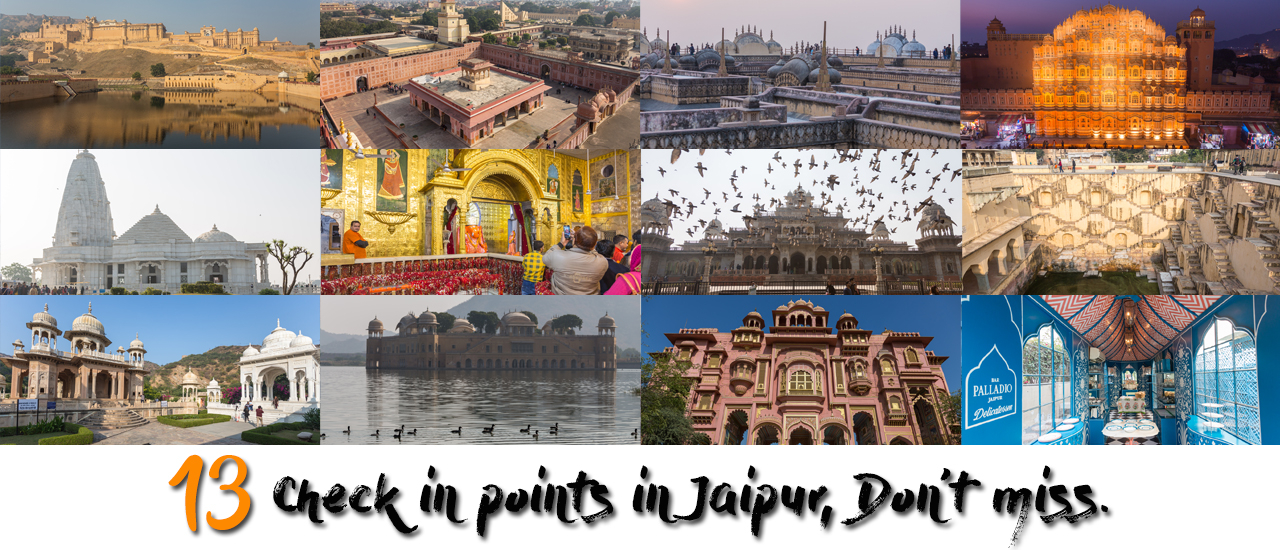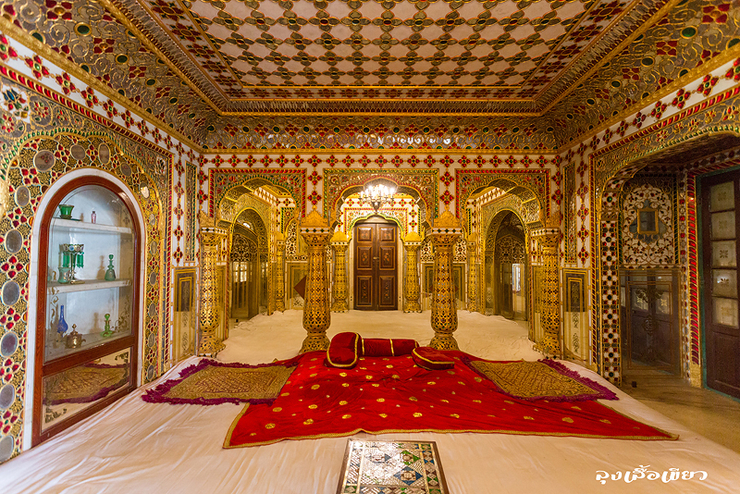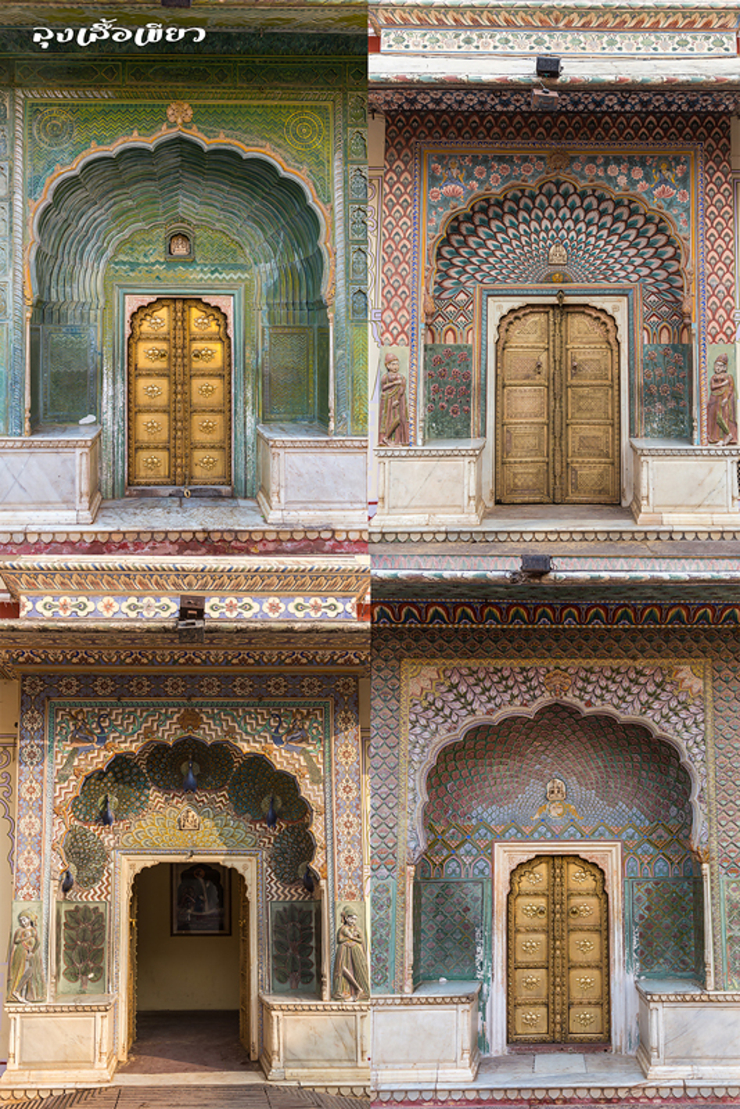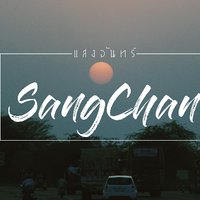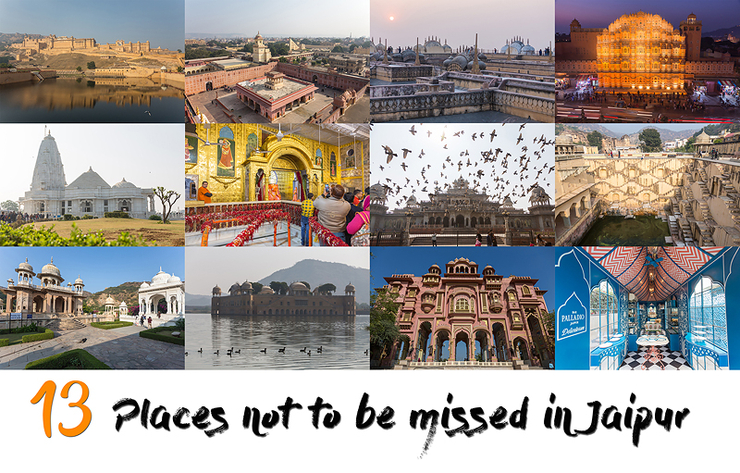
“Jaipur” means " the city of victory. It is the capital and largest city of Rajasthan. Buildings, especially in the old town, were painted pink.
This is because in the days of Maharaja Ram Singh, India was still under a British colony. To welcome King Edward VII from the United Kingdom in 1853, he ordered people to paint their houses in pink as a tribute to the colonial. So Jaipur was given the nickname of "Pink City".
Actually, there are many tourist attractions in Jaipur but 13 places that I will recommend below are the destinations that you should not miss when traveling to Jaipur.
1. City palace
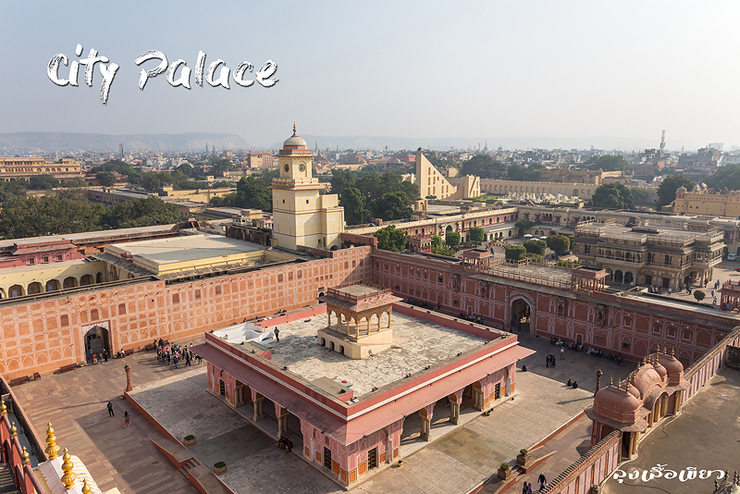
City palace is the second palace of Jaipur. It is a mixed architecture between Rajaput and Mogul. Formerly, it was the palace of Jai Singh. The palace was extended later. Now it is assembled into the Sawai Man Singh Museum. It consists of 4 interesting parts. The first part is the palace. The second part is the museum that displays the clothes of the king and the queen which has exquisite tailored. The third part is a collection of many amazing weapons and battle outfits. Some are astonishing weapons. And the fourth part is the art, paintings, photographs, and chariot. It also includes ancient carpet that has been inscribed in history. In the middle of the building, there are 2 enormous boilers made of silver metal. It is 1.50 meters high and the largest in the world. It is believed that the Madho Singh received it from the coronation of King Edward VII, containing water from the sacred Ganges.
Admission to the City Palace is 700 INR, but if anyone wants to see 3 extra rooms, the admission fee will be 3,500 INR. This price includes guide fees, a beverage to choose from tea, coffee, or fruit juice, cookie, and a bottle of drinking water per person.
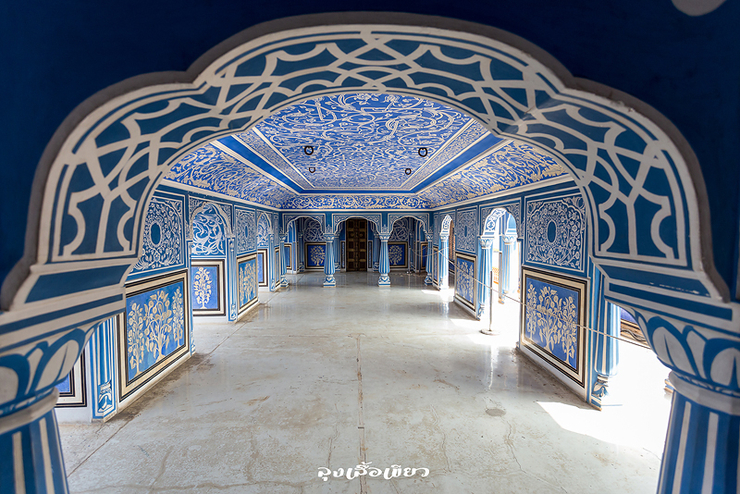
The Blue Palace in Chandra Mahal is the first special room. In the past it was a room for the royal family to rest with swinging swing. This room emphasizes blue tones and have flowers and leaves drawn in white, looking very beautiful.
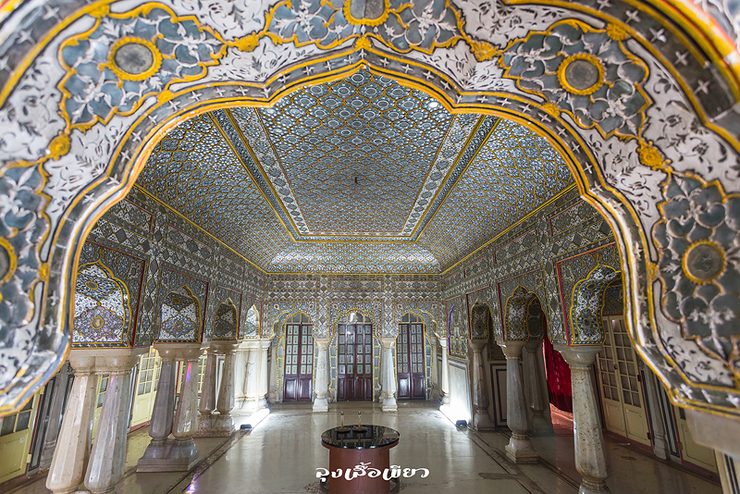
The Room of Mirrors or the Sri Niwas is a bedroom. The walls and ceilings are decorated with glass. The highlight of this room is when the door is closed and candle are lighten, we will see the sparkle of glass that reflects the candle light. It looks glittering just like stars.

The Golden room of Shobha Niwas in Chandra Mahal is a room similar to living room. It is another beautiful room. This room has a golden tone. The interior is decorated with marble and has golden pillars, decorated with grass, red and green stone in floral patterns on the walls and ceilings. These three special rooms was a place to stay and entertain guests visiting the palace in the past.

Another highlight that one must visit in the City Palace is the Pritam Niwas Chowk. It is the gate that is represented by 4 seasons, with the peacock gate representing the rainy season, the lotus gate for the summer, the rose gate for the winter, and the wave green gate for spring.
Today, City Palace is also the residence of the royal family and open some parts for tourists to visit. The guide told me that the prince is about 21 years old and still single. City Palace opens for visit everyday from 09.30-17.00.
2. Hawa Mahal

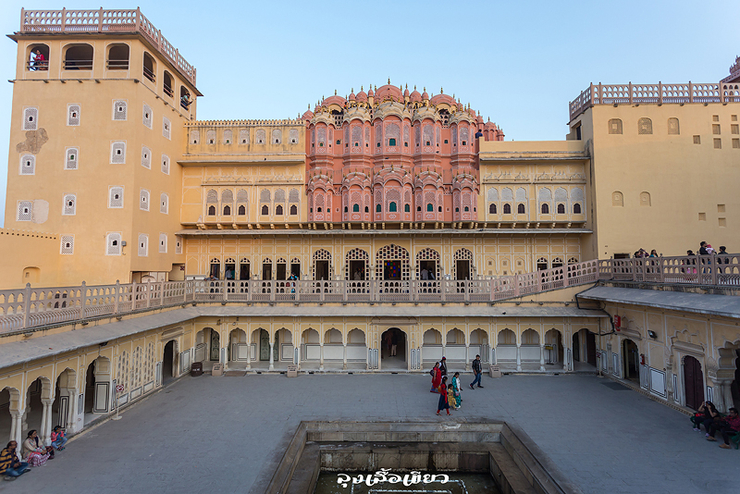
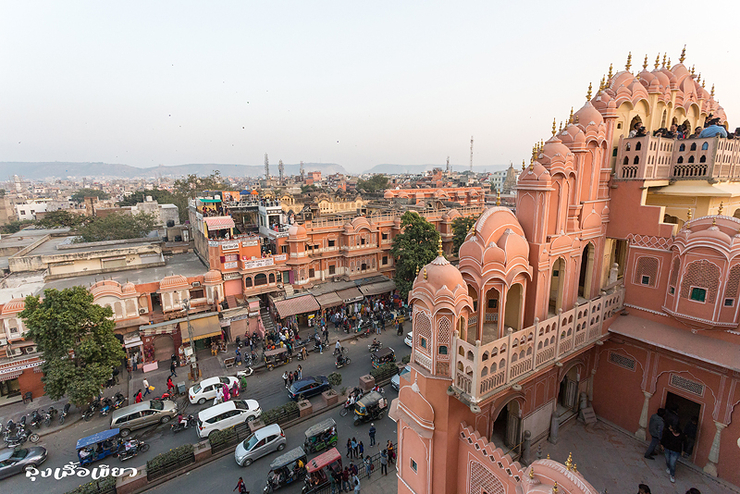
Hawa Mahal is one of many palaces in the city walls of the Pink City. It was built in the reign of Maharaja Sawai Pratap Singh, designed by Lal Chand Ustad, adapted from the shape of the Vishnu crown. The distinctive feature of this palace lies on the front of the building which has five-story windows looking like a honeycomb. It was built from bright red sandstone. The stone has been carved into a small window that can count up to 953, but is covered with sandstone, causing the concubine in the harem from the inside can look out but outside people can not look inside. And the benefit of having a lot of windows is that it is good for light and wind and that it is being named "Palace of Wind".
Hawa Mahal opens daily from 09.00-17.00. It is located near the City Palace and Jantar Mantar, all of which are within comfortable walking distance.
Across the street from Hawa Mahal is many Café, such as The Tattoo Café and Wind View Café. If you have time, go for a drink and watch the sunset view which has such a very good atmosphere. In front of Hawa Mahal also has a lot of souvenir shops. There are clothing stores, leather bags, and bracelets. It can be said that they are so many things you can buy home. Important note is, don't forget to bargain the price. You can start with half of the price offered by the merchant. If the shop seller doesn't agree, walk out of the shop and they will give you the last price that you are willing to pay for sure.
3. Amber Fort
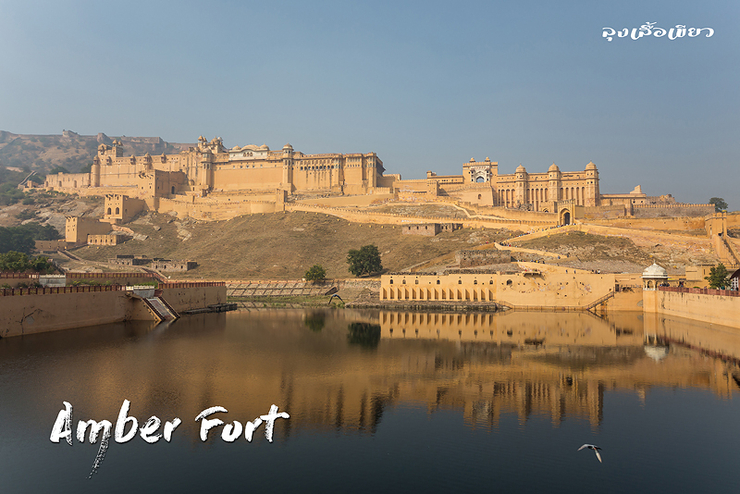
Amber Fort is a red sandstone fort that stands out on a hill above Lake Maota. Inside, there is a palace that used to be the residence of Rajaput Maha Raja and the royal family. This fortress is over 1,000 years old. It has been the military and administrative center of the Maharaja of Jaipur for many generations. Amber Fort was built in 966. Upon the arrival of Maharaja Man Singh in 1592, royal palace, mosque, and stateroom were built inside the fortress. After that, there was additional construction and finally completed in the reign of Maharaja Jai Singh before moving the capital to a flat area. The Amber Fort is a prototype of Rajaput architectural art. It is a perfect blend between Mogul (Islam) and Hinduism. It is one of the six forts of Rajasthan, which was registered as a World Heritage in June 2013.

In the main gate of Jaipur, there are statues or paintings of Lord Ganesh everywhere for good fortune when the people walk in and out. It is believed that Lord Ganesh will protect and keep everyone who walk pass this gate to be safe and happy.

Sheesh Mahal is the palace of the Maharaja, decorated with mirrors and stained glass ceiling. The pattern is very detailed and delicate. If we come to see here at night and light a candle, this place must be beautifully glittering.

Aram Bagh or Garden of Paradise plant jasmine everywhere in order to send in this aromatic scent throughout the royal palace.
Amber Fort is open daily from 08.00-17.30. There are 3 ways to get to Amber Fort: walking up, riding an elephant and riding a jeep (the price of jeep is 500 INR and we will also need to pay the jeep admission fee of 50 INR, each jeep can take up to 5 people).
4. Panna Meena Ka Kurd

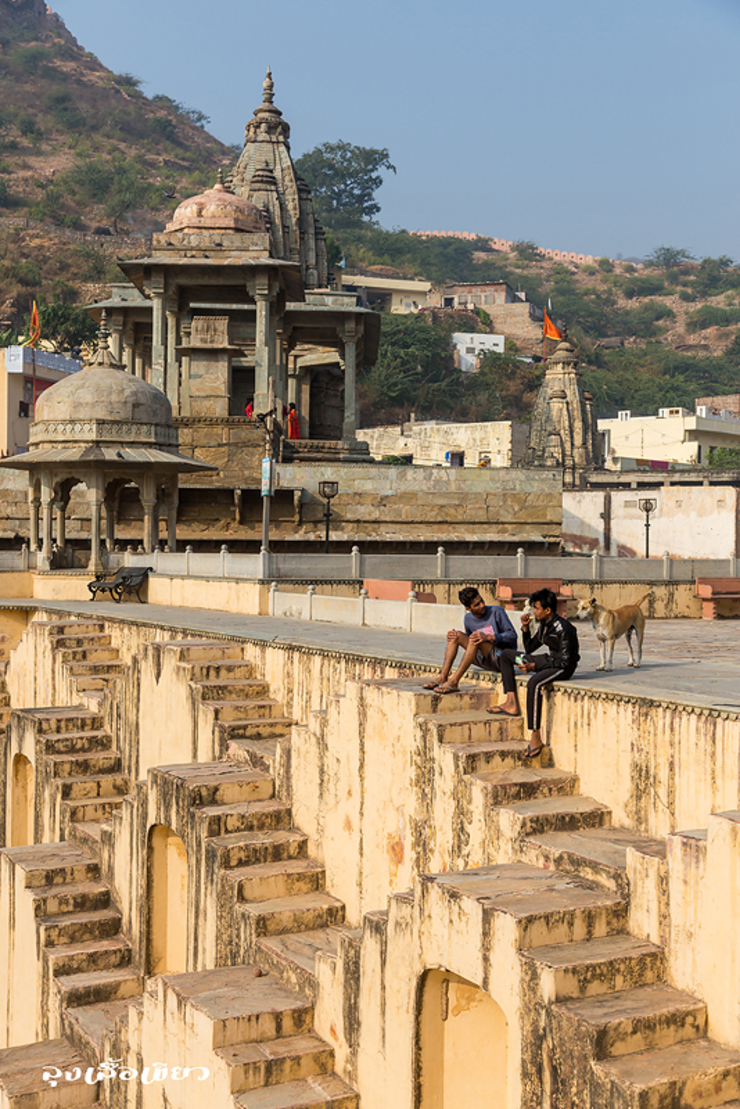
Panna Meena Ka Kurd is an ancient pond built from the wisdom of the people in the past. I must say that I highly respect the idea of the creator. The character of Step Well is a narrow staircase surrounded by ancient ponds. The design of this complex structures at each point has a unique purpose. For example, the design of stairways all around the well was to allow villagers to enter the pond at the same time, and to prevent people overtaking the queue, the staircases were very narrow and offered a resting area in many areas. And regardless of how dry the water is, people can still walk down to the bottom of the pond. In addition to these various benefits, I think the beauty of the patterns that are made from the steps is additional gain.
Panna Meena Ka Kurd is a Step Well that is located near the Amber Fort. If you take a jeep to Amber Fort, you will pass this Step Well. You can ask the driver to stop. There is no admission fee here.
5. Jal Mahal
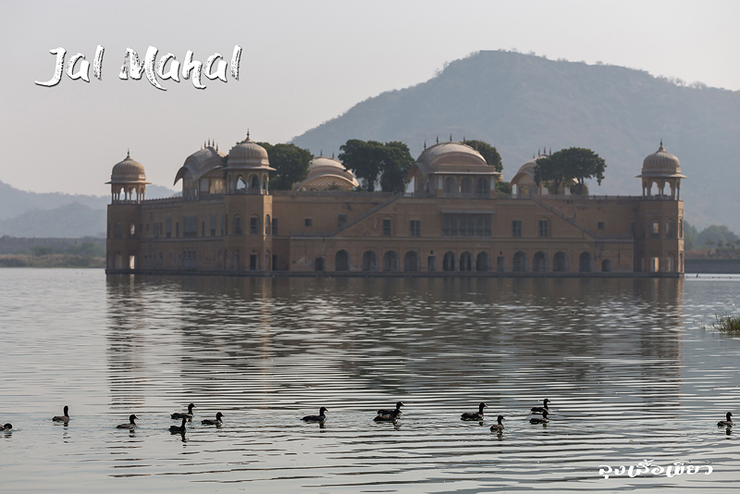
Jal Mahal is a prominent water palace in the middle of Man Sagar Lake with the backdrop of the Nahargarh Mountains. This palace was built according to the wishes of Maharaja Sawai Jai Singh II. The palace was built with a mixed architectural style between Rajaput and Mogul which is the unique blend of Rajasthan. Jal Mahal is built from red sandstone. There are 5 floors, with 4 floors below being flooded when the lake reaches its highest level and only the top floor is visible. Chatri, which is a square-shaped roof built in the style of Bengal architecture and the Chatri in the four corners of the building is an octagonal shape. Visitors can view Jal Mahal only from outside by standing at the lake.
For those who come to India and would like to try sitting on the back of a camel, camel riding is available at the road in front of Jal Mahal. For each camel riding, the price is 500 INR and can seat for 2 people.
6. Royal Gaitor
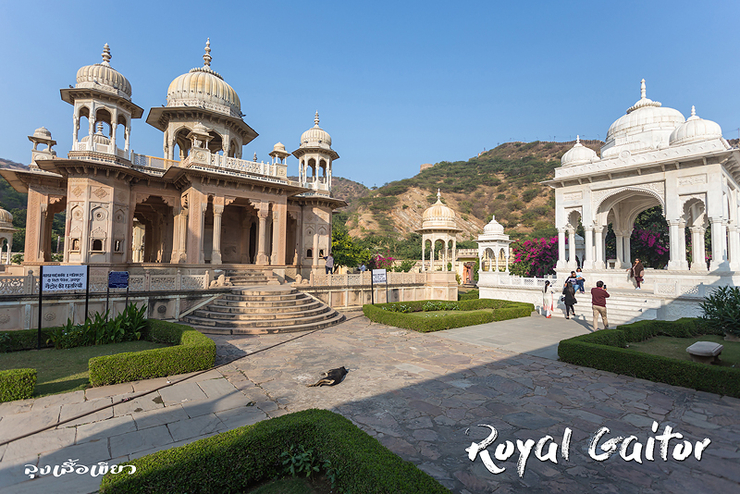
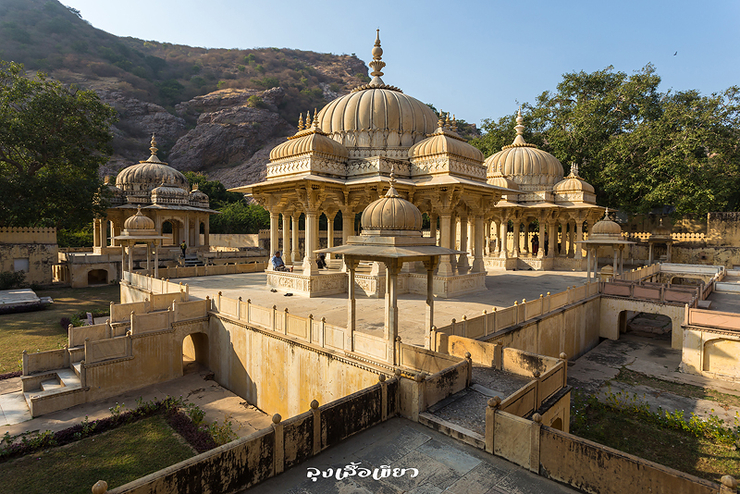
Royal Gaitor or the Maha Raja Monument of Jaipur, was created to commemorate the former Maharaja who ruled Jaipur. Inside is the tomb of many former Maharaja, divided into many parts according to the royal family. Royal Gaitor is open for visit everyday from 06.00-18.30, but Monday will open from 09.00-18.30.
7. Jantar Mantar

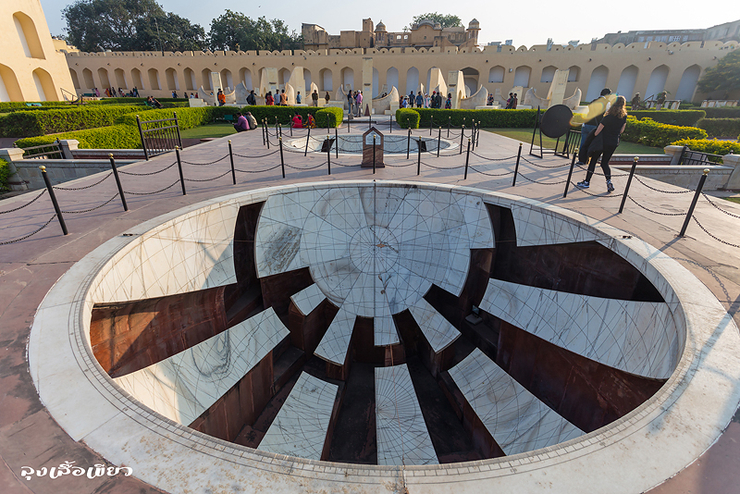
Jantar Mantar was built and invented by Maharaja Jai Singh II in 1727, with interest and intuition in astronomy. He ordered to build this observatory at the same time with the construction of the City Palace, in order to see the movements of the sun, moon and stars. The Jantar Mantra Observatory is regarded as an important tool in ancient times since it is used to calculate the auspicious time for the battle. The Jantar Mantra Observatory has been registered as a UNESCO World Heritage Site in 2010. It opens daily from 06.00-18.00.
8. Birla Mandir
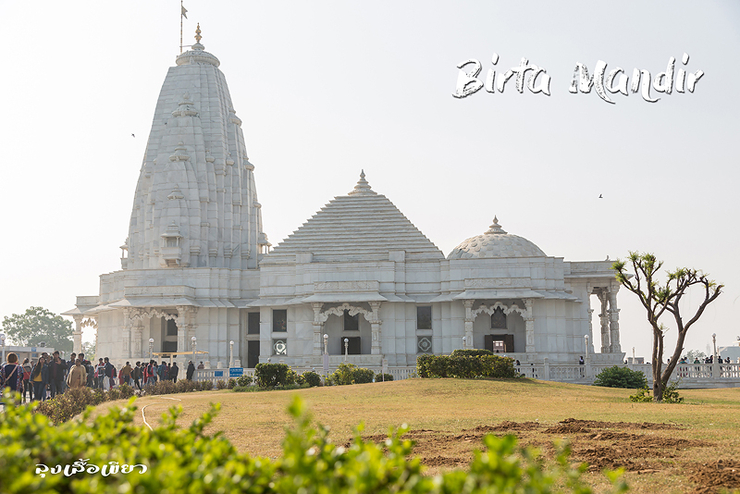
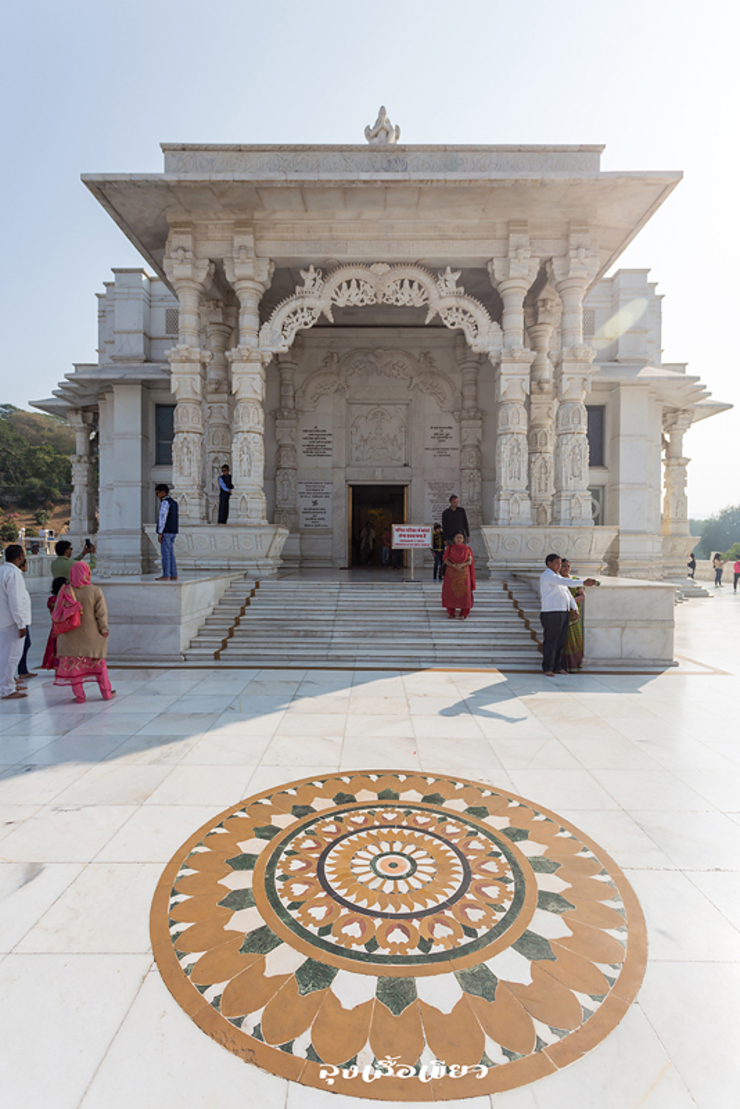
Birla Mandir is a Hindu place to worship Lord Vishnu and Mother Lakshmi. It was built in 1988, the architecture of the temple combines the style of the contemporary art with ancient Indian patterns and made up of white marble. There is a large dome that symbolizes Hinduism, Buddhism and Islam, the three major religions of India. Inside the temple, there are inscriptions of legendary events on large marble plates.
Birla Mandir is open for admission for 2 times. The first round is 06.30-12.00 and the second time is 15.00-20.30. No photography is allowed inside and admission is free.
9. Ganesh Temple

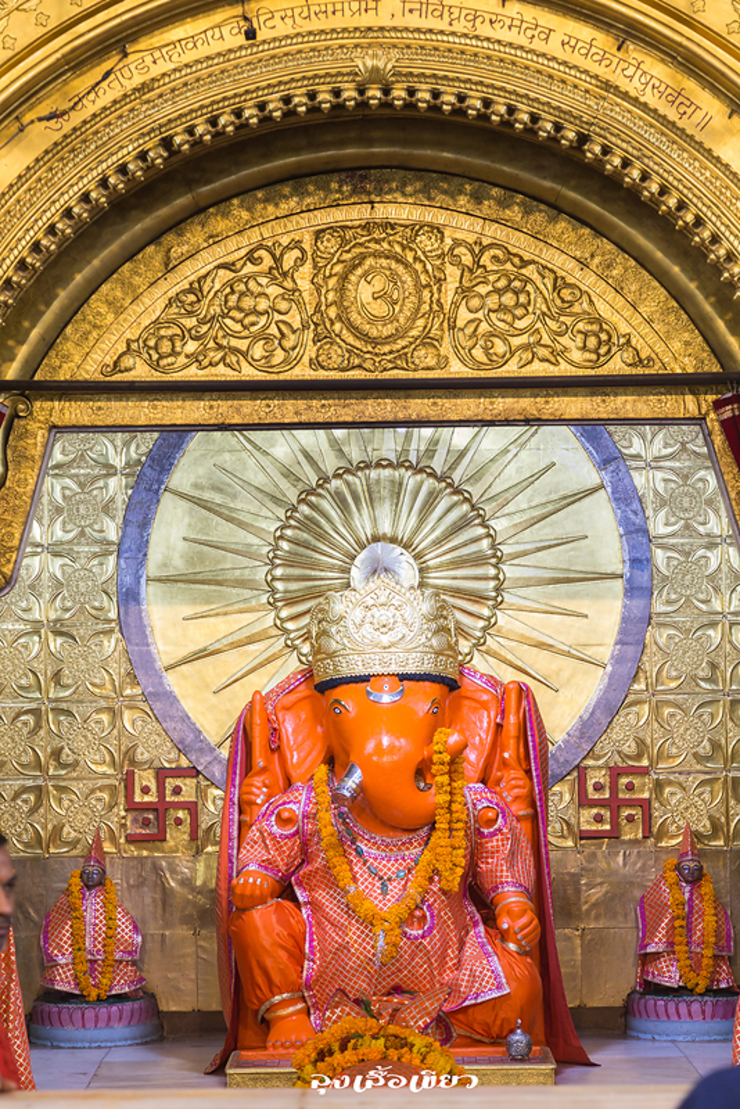
Ganesh Temple was built in the early 18th century, located on a small hill. It is a famous temple with auspiciousness of Lord Ganesha. It is an important highlight that many people, both inside and outside of Jaipur, would come to visit, worship, for the blessings in their daily lives and to find eternal happiness.
Ganesha, the Hindu god of elephants, is considered a god of auspiciousness, wisdom, knowledge and wealth. Therefore, many people continually come to worship by bringing the popular snack, Mokka, to this Ganesh temple. Ganesh Temple is open for visit twice a day, which is 05.00-13.00 and 14.30-21.30. Admission is free. Ganesh Temple is not far from Birla Mandir, it is within walking distance from each other.
10. Albert Hall Museum

Albert Hall Museum is the oldest museum in the state of Rajasthan. In the past, it was the administrative office of the city and later changed into an Art Museum that gathers many different arts and cultures. The name Albert comes from the royal visit tour of King Edward VII (Albert Edward). This museum is characterized by English architecture. Inside, big camera is not allowed to take pictures but a mobile camera is permitted. For history lover, you will certainly enjoy many antiques exhibit inside.There is also a mummy to watch. For the outside, there are many pigeons and it looks very beautiful when they fly.
11. Nahargarh Fort



Nahargarh Fort means "Tiger Cave", it is located near Amber Fort. It is one of the three forts that in the past has protected the city. Today, in addition to being an important historical tourist destination, it is also a museum and an art gallery in Jaipur.
Nahargarh Fort is a high angle viewpoint of Jaipur and will be the most beautiful when the sun is setting. If you travelling by a small car up to Nahargarh Fort, you can park aside to enjoy the view along the way of which you can see Jal Mahal in high angle as well. Nahargarh Fort is open daily from 10.00-18.00.
12. Patrika Gate

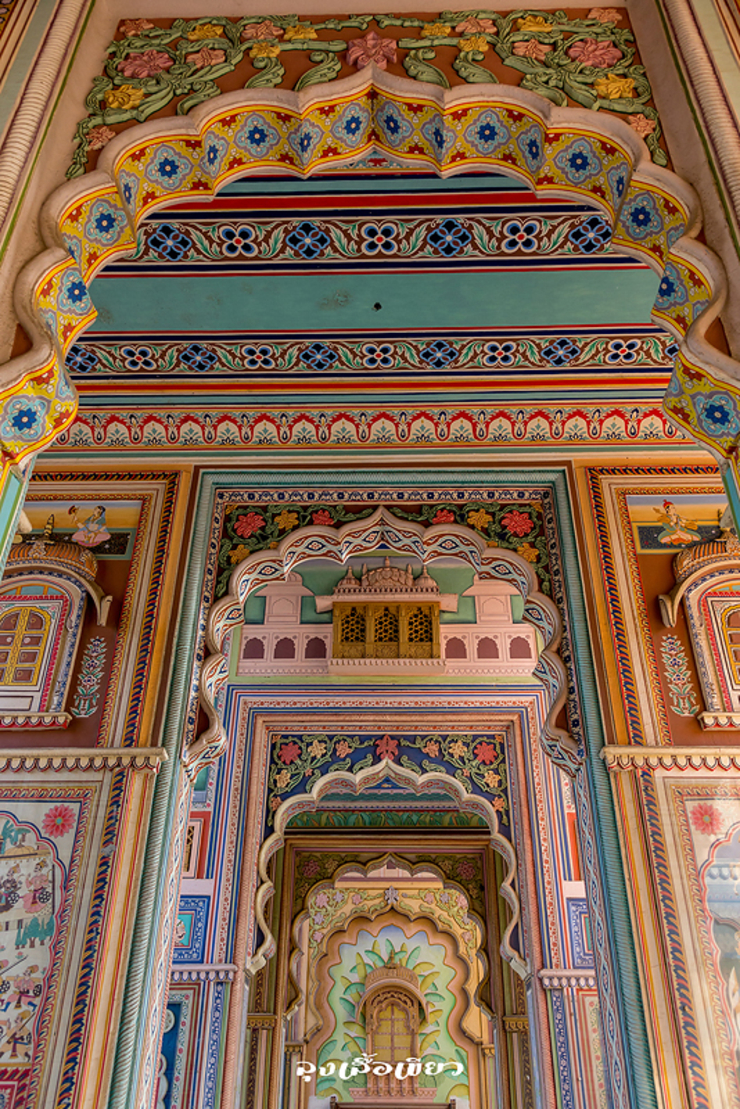
Patrika Gate is the 9th gate of Jaipur. It was built by the owner of Patrika newspaper. It used to be just an ordinary roundabout but became more colorful when the city gate was built. Then, a lot of tourists come and shoot photos at Partrika Gate. Inside the door there is a color painting showing the history of Jaipur city. If you love to take photos, you should not miss this place. The admission is free.
13. Caffé Palladio
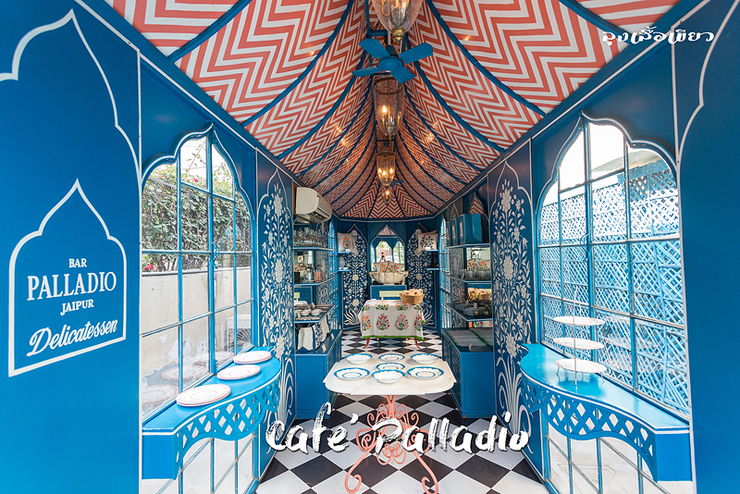

Caffé Palladio is an Italian-Arabic style restaurant. The owner is a Swiss-Italian and a Dutch friend. It was inspired by Andrea Palladio, an Italian architect who is considered one of the most influential in design concepts in the history of Western architecture, which is also the origin of the shop's name. The shop interior is decorated in Baroque style with Rajaput style. The shop use local ingredients for cooking.
Caffé Palladio closes every Tuesdays. Monday-Saturday is open from 12:30- 22:30 and on Sunday from 10:30-22:30. If you love taking pictures, you will surely love this place as there are a lot of shooting angles.
Finally, please follow my other reviews or talk to me here https://www.facebook.com/unclegreenshirt :)
ลุงเสื้อเขียว
Wednesday, January 22, 2020 5:02 PM

